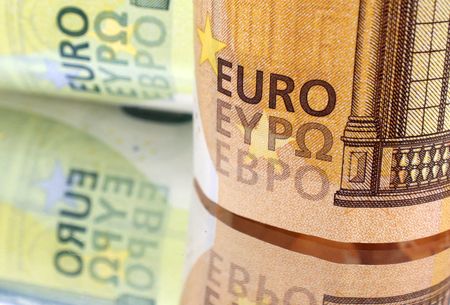By Samuel Indyk
LONDON (Reuters) -Europe’s smaller companies are emerging as a popular vehicle for investors to help insulate portfolios against both tariffs and a stronger euro, as cheaper credit and the prospect of more government spending bolster confidence in the economic outlook.
The domestic-leaning bias of smaller companies makes them less vulnerable to levies on cross-border goods and they are also less exposed to currency swings when the euro strengthens, making euro-zone exports more expensive abroad.
The STOXX Europe small- and mid-cap indexes have risen 9% and 11% this year, respectively, beating the STOXX Europe large-cap index, which has risen just 7%.
U.S. President Donald Trump has bagged a handful of trade agreements with global partners since unveiling sweeping global levies in April, the most significant of which was a deal with Japan this week.
But there is still no deal with the European Union and an August 1 deadline is just days away. Speculation swirled on Wednesday of a 15% rate for the EU, but was quickly dismissed by the White House.
“One of the benefits of small-caps is that they are a bit more insulated from a geographical standpoint,” said Ingmar Schaefer, a portfolio manager at Van Lanschot Kempen.
“Whatever happens with U.S. tariffs, a local company will not be impacted by as much as a global player in the same field.”
An analysis by Goldman Sachs found that companies in the STOXX large-cap index generate about 35% of their revenue in Europe, compared to 60% of revenue generated by companies in the small- and mid-cap indexes.
That has helped to offset a stronger currency. The euro has risen over 12% in 2025 to around $1.17, defying predictions prior to the April 2 “Liberation Day” tariff announcements that it could even reach parity with the dollar. But that was upended by investors turning their back on U.S. assets.
Some analysts now expect the euro to hit $1.20, a possible headwind for larger companies due to greater international exposure, but a relative tailwind for smaller companies.
“The way people have played Europe in the past is to be apologists for Europe, targeting businesses that have high revenue exposure to the U.S. or the Asian consumer through the luxury sector,” said Harry Eastwood, investment director at Artemis Investment Management.
“Liberation Day slightly disrupted the global order of trade and small- and mid-caps have become much more interesting, purely from the fact that they’re somewhat insulated from that,” Eastwood said, adding that his fund was at the upper limit of its small- and mid-caps weighting.
DISCOUNT SHRINKS
Historically, smaller companies have tended to trade at a premium to large ones, as they generally exhibit higher growth rates.
But the situation reversed in 2023 and 2024, as inflation in Europe soared and the European Central Bank raised borrowing costs, leading smaller companies to now trade at a discount to bigger ones.
Small-caps traded at a record discount of 11% to larger companies in March this year but that has since shrunk.
The STOXX Europe small-cap index currently trades at 13.4 times forward earnings, below the large-cap index’s 14.3 times, a discount of 6.5%.
“We’ve been in a situation where most investors have had less confidence in the earnings of small companies compared to large companies which is why they traded at a discount,” said David Walton, fund manager at Marlborough.
“But in the last month, we’ve seen a slight increase in confidence in the earnings outlook for small companies which is supporting the rally.”
European small- and mid-sized companies have registered net inflows for the last 10 weeks straight, the longest such stretch since 2021, according to Lipper fund flows data.
Germany, the euro area’s biggest economy, has unveiled a massive spending push, while the ECB has begun to lower interest rates. Both could spur the euro zone economy, giving it a much-needed boost after years of subdued growth.
Germany’s SDAX small-cap index, has jumped almost 20% since the federal election in February, while the blue-chip DAX has risen 8.4% in the same period.
The ECB paused its rate-cutting cycle this week, but the deposit rate is 200 basis points lower than it was in the middle of last year.
“When we look at the next 12 months we think there can definitely be a re-rating of small caps vis-à-vis large caps,” said Van Lanschot Kempen’s Schaefer.
(Reporting by Samuel Indyk; Editing by Amanda Cooper and Rachna Uppal)









